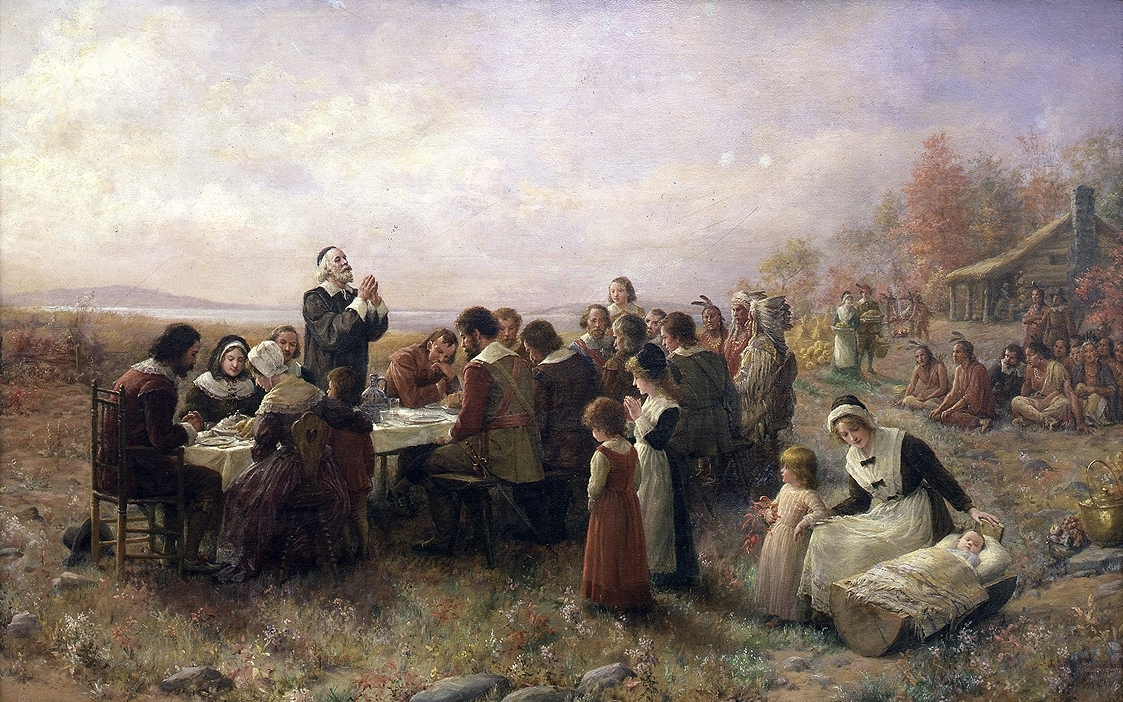Authors:
Historic Era: Era 2: Colonization and Settlement (1585-1763)
Historic Theme:
Subject:
November 1996 | Volume 47, Issue 7


Authors:
Historic Era: Era 2: Colonization and Settlement (1585-1763)
Historic Theme:
Subject:
November 1996 | Volume 47, Issue 7

Sometime in the fall of 1621, possibly in November, the settlers at Plymouth Plantation held their first thanksgiving feast. After arriving the previous fall and enduring a harrowing winter, the fifty or so surviving Pilgrims had planted a successful crop of corn, along with “indifferent good” barley and some peas that withered on their stems. To celebrate the harvest, they invited over their neighbors—Chief Massasoit and around 90 of his men.
The menu included fowl (turkey, quail, ducks, and geese all abounded in the area), venison (which the Indians provided), and probably fish and shellfish. Boiled pumpkin and corn cakes and pudding are also likely candidates. These may have been supplemented with wild nuts and berries, but probably not cranberries, since the settlers had no sugar to sweeten them. They lacked wheat flour and dairy products as well. The feast lasted three days, and in a tradition that still continues, the women did the cooking while the men smoked, drank, and played games.
Strictly speaking, the high-spirited gathering was a harvest festival, not a thanksgiving, which would have been solemn and prayerful. The plantation’s first official day of thanksgiving was not proclaimed until July 1623 to mark the end of a long drought. In February 1630, the Pilgrims’ northern neighbors, the Puritans of Massachusetts Bay, held a thanksgiving day of their own after the arrival of ships bearing supplies and additional colonists. The following year saw Massachusetts’s first autumn thanksgiving.
Shortly after the Pilgrims’ celebration, on November 11, the ship Fortune dropped anchor in Plymouth Harbor and disgorged thirty-five settlers. Their number increased to thirty-six the next day when Martha Ford, whose husband had died in transit, gave birth to a son. The debarkation inaugurated another hardy New England tradition: snootiness toward later arrivals. Governor William Bradford sniffed that “most of them were lusty yong men, and many of them wild enough, who litle considered whither or aboute what they wente.” He conceded that “the plantation was glad of this addition of strenght, but could have wished that many of them had been in beter condition” and grumbled about having to share meager provisions (the Fortune brought none of its own). Only a third of the Fortune party adhered to the Pilgrims’ religious beliefs; the rest were “strangers,” which may account for Bradford’s disdain.
Despite their deficiencies, the “late commers” were fed, outfitted, lodged, and set to work alongside their venerable counterparts. When Christmas came around, many